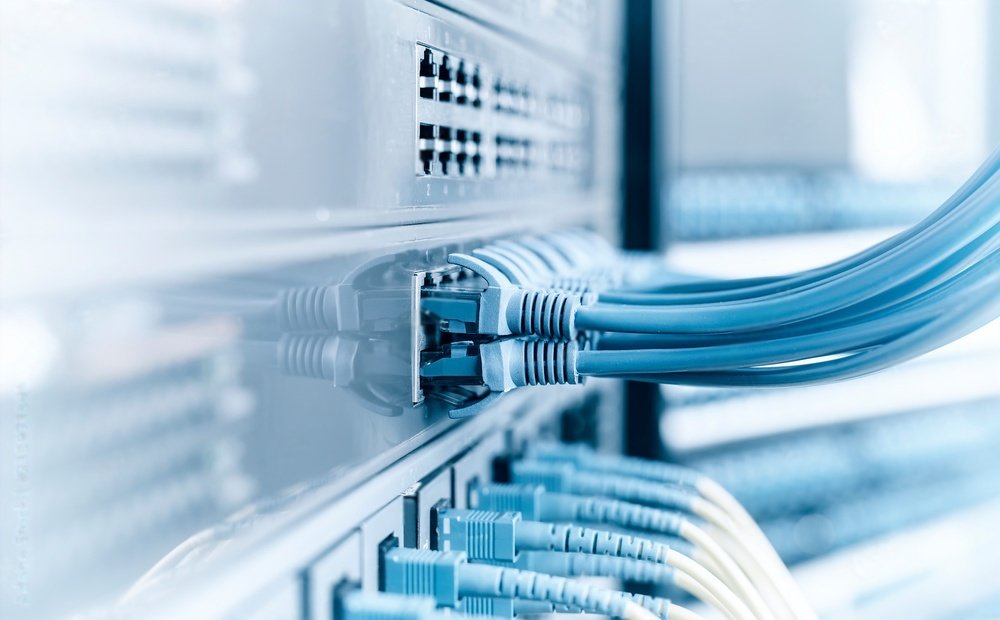Ethernet switching enhances network speed by efficiently directing data packets between devices, minimizing collisions, and reducing latency. By segmenting traffic and prioritizing data through Quality of Service (quality of service) features, switches optimize bandwidth allocation. Additionally, advanced Ethernet switches support higher speeds and multiple simultaneous connections, significantly boosting overall network performance and ensuring smooth, fast data transmission across your infrastructure.
Introduction to Ethernet Switching
Many businesses and individuals are constantly seeking ways to enhance their network performance. One crucial technology that often needs to be appreciated more is Ethernet switching. Understanding and utilizing an Ethernet switch can significantly boost your network speed and reliability. Whether you run a small home office or manage an extensive corporate network, Ethernet switching can be a game-changer for your data communication needs, offering seamless and efficient service delivery.
Ethernet switching involves using devices called Ethernet switches to manage and route data packets effectively within a network. These switches optimize data flow, minimize congestion, and ensure efficient device communication. Efficient data flow not only improves the overall performance of your network but also enhances user experience by reducing latency and increasing the speed at which data is transferred. You can visit this resource for more details on what Ethernet switching is all about.
What is Ethernet Switching?
Ethernet switching is a pivotal technology for modern networks. It manages data packets by directing them to their intended destinations using a system of MAC (Media Access Control) addresses. This ensures that data packets travel through the most efficient path without unnecessary detours, reducing latency and increasing network efficiency. Unlike hubs, which broadcast the same data to all connected devices, switches create specific pathways for each packet, ensuring it reaches its destination swiftly and securely. This targeted data transmission drastically reduces unnecessary network traffic, allowing other data to flow freely and unobstructed.
The Benefits of Ethernet Switching
- Increased Network Performance: Ethernet switches help reduce collisions and broadcast storms, leading to a more efficient network. By filtering and forwarding data packets only to relevant ports, switches minimize unnecessary traffic, allowing your network to operate at optimal speeds. This is particularly important in networks with heavy data loads, ensuring each device receives the necessary bandwidth for operations.
- Enhanced Security: Ethernet switches can improve security by segmenting a network into smaller, manageable sections. This segmentation, often called VLANs (Virtual Local Area Networks), helps isolate sensitive data and restrict access, making it harder for unauthorized users to infiltrate the network. Enhanced security features include advanced encryption standards, which protect data during transmission and safeguard sensitive information against cyber threats.
- Scalability: These devices make it easy to expand your network without losing performance or manageability. As your business grows, adding more devices or areas to your network is straightforward with Ethernet switches, ensuring your network can adapt to your evolving needs. Whether you’re scaling up for new developments or integrating additional services, switches provide the flexibility and reliability necessary for seamless expansion.
How Ethernet Switching Works
Ethernet switches operate by examining the MAC address of incoming data packets. They then forward the packets to the appropriate destination based on this address. This process minimizes unnecessary data transmission and ensures a swift flow of information. An Ethernet switch’s ports pick up the MAC addresses of the devices connected; based on this knowledge, the ports only send data to the appropriate devices. This intelligent data handling drastically reduces network congestion and enhances overall performance, ensuring your network operates efficiently and effectively.
Real-World Applications of Ethernet Switching
Ethernet switching is widely used in various settings, including home networks and large enterprise systems. It manages high data traffic, ensuring smooth communication in busy office environments. It is crucial for real-time data processing and secure transactions in finance-related industries. Ethernet switches also provide reliable internet access across campuses and educational institutions, supporting online learning and administrative functions. They connect machinery and control systems in industrial settings, enhancing efficiency and ensuring uninterrupted operations. Reliable data transmission in these environments can significantly improve production quality and operational safety.
Choosing the Right Ethernet Switch
When selecting an Ethernet switch, consider the number of ports, speed, and manageability features. Different models have different performance levels; therefore, choosing the one that best meets your needs is essential. For home offices or small businesses, unmanaged switches with fewer ports might suffice, offering simplicity and ease of use. These types of switches are plug-and-play, requiring minimal configuration. Larger organizations may benefit from managed switches with advanced features like remote configuration, monitoring, and enhanced security settings. These switches allow IT administrators complete control over network traffic, enabling more sophisticated management and troubleshooting capabilities.
Assess your network requirements and future expansion plans to make an informed decision. Consider the bandwidth demands of your current applications and any future technologies you plan to adopt. Whether you focus on high-throughput data applications, video conferencing, or secure financial transactions, an Ethernet switch is designed to meet those needs.
Expert Opinions on Ethernet Switching
Many industry experts advocate for businesses to invest in high-quality Ethernet switches. According to a recent article from Network World, advancements in Ethernet switching technology continue to drive network performance enhancements. Experts emphasize the importance of adopting cutting-edge switches to keep pace with the growing demands of data-intensive applications and services. High-performance switches enhance speed and provide robust features for better network management and security.
The growing dependence on cloud services and remote work options further highlights the necessity for adequate network infrastructures. Experts point out that the right Ethernet switch can provide the backbone to support these services, ensuring businesses remain competitive in a digital-first world. Staying ahead in network technology can improve operational efficiency and end-user experience.
Future Trends in Ethernet Switching
Ethernet switches are expected to undergo significant advancements in the coming years, with future trends focusing on automation, intelligent network management features, and advanced security protocols. These developments will simplify network operations, reduce IT team burden, and offer more robust protection against cyber threats. Multi-gigabit Ethernet switches are also expected to handle larger data volumes at higher speeds, a particularly relevant trend as data demand grows. These switches will also incorporate more power-efficient designs, contributing to sustainability efforts while maintaining high performance. Staying informed about these trends will help businesses ensure their network infrastructure remains robust and secure.



